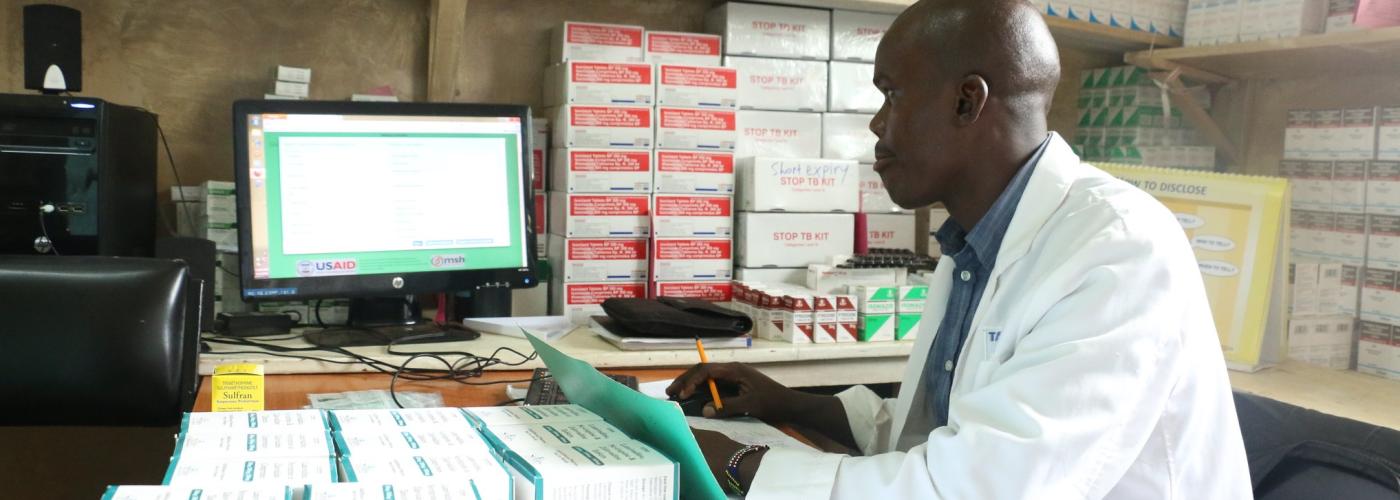Opportunities in Advanced Manufacturing Technologies for Local Production of Health Commodities
Image

The COVID-19 pandemic has highlighted the need for health supply security to efficiently respond to a pandemic. One key way to ensure supply security of life-saving medicines is through geographic diversification of the sources of active pharmaceutical ingredient (API) and finished pharmaceutical product (FPP) manufacturing. Much of the world relies on APIs manufactured in Asia, and on imported FPPs to meet their public health needs; in some Sub-Saharan African countries, for example, 70-90% of drugs consumed are imported. Such reliance on a limited geographic source makes low- and middle-income countries (LMICs), particularly those in Africa, vulnerable to shortages and supply chain disruption. Sub-Saharan African countries in particular face a high burden of disease, such as HIV and malaria, for which medicines are nearly entirely procured from generic manufacturers in Asia despite significant demand and market opportunities in Africa. By building manufacturing capacity closer to where the supply is needed and supporting African markets to become more competitive, countries can ensure a reliable and uninterrupted supply of life-saving commodities, continued progress toward epidemic control, and adequate preparedness for eventual pandemics.
There are many factors to consider in any effort to promote domestic manufacturing, including but not limited to the need for sustainable and affordable financing, strong and efficient national regulatory systems, and access to technical know-how and market analyses. A key consideration is also the use of advanced manufacturing technologies (AMTs). AMTs are innovative technologies and processes, which, by improving manufacturing efficiencies and lowering overall production costs, have the potential to further advance domestic manufacturing. Regions and countries where domestic manufacturing is nascent are especially positioned to adopt such fit-for-purpose and more cost efficient manufacturing technologies, as they will not be burdened by existing manufacturing infrastructure.
Most leading generic manufacturers use technologies that were established decades ago, which rely on traditional manufacturing processes known as “batch” manufacturing. However, it is well understood that “batch” manufacturing has considerable downsides: it is highly manual, labor and time-intensive and involves the use of large volumes of harmful solvents with limited potential for reuse, which may result in significant adverse impact to the environment. When batch manufacturing is employed, the process of transforming the raw material into the final product can occur at different times and locations; this involves many halts in the production process resulting in an inefficient and wasteful production cycle, with large amounts of capital bound in intermediates—key components of unfinished products. The required cleaning and set-up of the equipment from one step to the next and between products consumes significant production capacity. This process also involves advanced purchasing and storage of intermediates and raw materials and requires large physical footprints that can be quite expensive. In fact, some estimates of these types of inefficiencies and quality issues cost the pharmaceutical industry approximately $50 billion a year.
AMTs and specifically continuous manufacturing, provide options for more streamlined and efficient manufacturing that can translate into significant cost efficiencies, improve quality control, increase capacity for rapid scale-up, particularly in light of increasing demand for products, as well as reduce environmental impact. In continuous manufacturing, the finished product can be manufactured from start to finish in one location. Consequently, fewer materials are required to be stored in advance, thus requiring smaller production plants, compared to traditional methods. Therefore, in addition to the aforementioned efficiencies, the resulting smaller physical footprint required for continuous manufacturing may facilitate entry of new manufacturers in the market.
Despite the known benefits of AMTs, such as continuous manufacturing, batch manufacturing remains the mainstay of generic pharmaceutical manufacturing for various reasons: significant investments to build existing traditional manufacturing facilities, a well-established workforce trained in batch manufacturing, and an alignment with existing regulatory systems.
A significant opportunity exists—countries and regions that do not have existing infrastructure for local manufacturing can leapfrog current batch manufacturing methods and adopt hybrid approaches that leverage advanced manufacturing technologies such as pharmaceutical continuous manufacturing. Adoption of AMTs requires an upfront investment in new infrastructure, research and development, and the development of scientific, technical, and regulatory knowledge. Several countries and regions, particularly China, India, and those in Europe have made significant investments in spurring advanced manufacturing practices: for example, India has made a $1.3 billion investment in AMTs as part of an effort to reduce its dependence on foreign sources of API in response to COVID-19 USP 2021. Policy Considerations to Help Harness Pharmaceutical Continuous Manufacturing. Available at https://www.usp.org/supply-chain/advanced-manufacturing.
USAID supports increasing domestic manufacturing capacity for life-saving health commodities through innovative methods, including AMTs. For more than 25 years, USAID has collaborated with the United States Pharmacopeia (USP) to achieve meaningful improvements in medicine quality in LMICs around the world, with recent work in AMTs supporting significantly more productive manufacturing processes resulting in higher yields and other efficiencies referred to as “process intensified chemistry.”
In addition, various agencies within the U.S. government have been working with the Medicines for All Institute at Virginia Commonwealth University (M4ALL), to develop improved API manufacturing processes leveraging AMTs and continuous manufacturing for essential medicines in the United States and LMICs. One example of an output of this collaboration is USAID’s investments have also contributed to M4ALL’s work in the development of low-cost API manufacturing processes for life-saving medications, specifically high volume tuberculosis medications.
As many LMICs consider establishing and developing local manufacturing capacity, particularly those in Africa, for which there are still significant barriers, consideration for these opportunities will be critical to incorporate fit-for-purpose AMTs and efficient processes for which the continent is ripe.
Co-authors include Anita Deshpande (M4ALL) and Jude Nwokike (USAID’s Promoting the Quality of Medicines Plus Program/USP). The views in this article are those of the authors and do not necessarily represent the views of USAID nor the United States Government.

